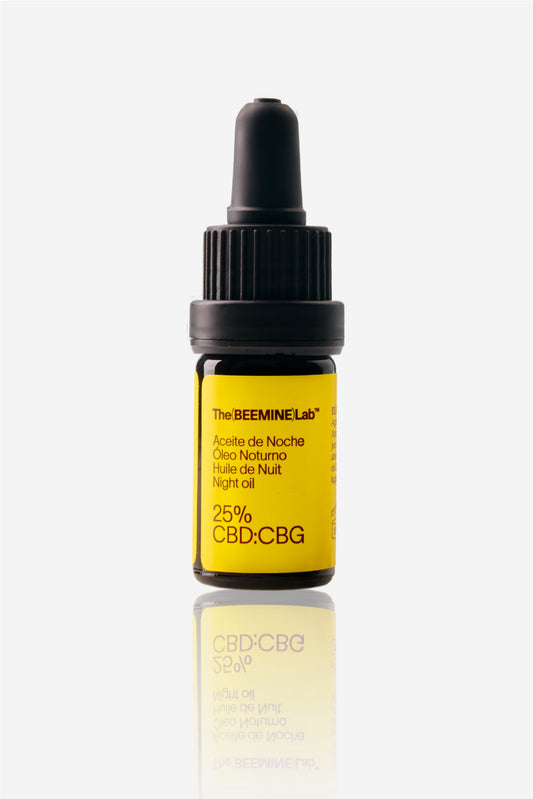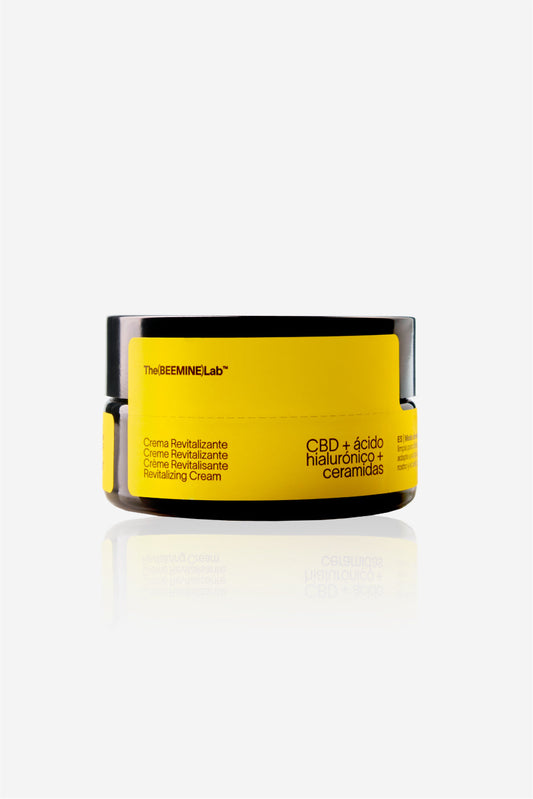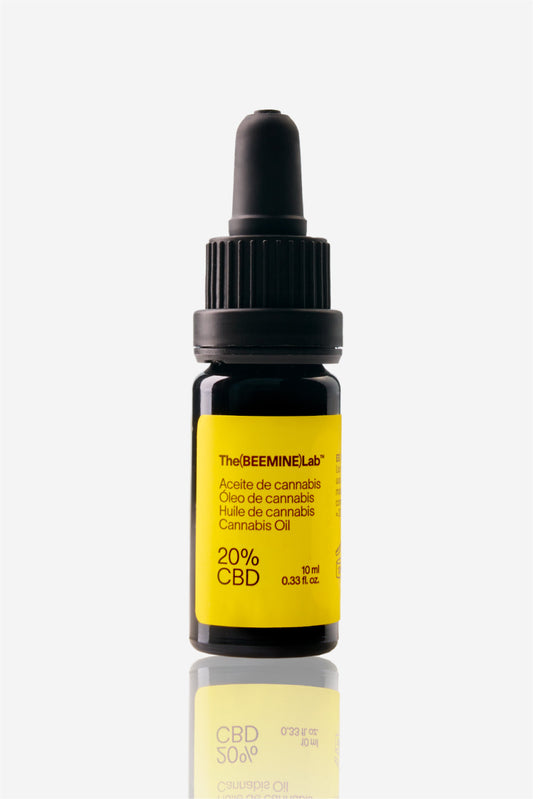Among other pathologies, chronic pain affects people with: fibromyalgia, rheumatoid arthritis, osteoarthritis, chronic migraine, endometriosis, Crohn's, etc.
What is chronic pain?
It is an unpleasant sensory and emotional experience , associated with an evident or probable tissue injury, and described in terms that coincide with that injury. That is, pain is not only considered a nociceptive experience*, but
is also associated with subjective and emotional factors inseparable from the painful sensation . (
1 )
*Nociceptive pain: Concept coined to distinguish pain from physiological processes related to the nervous system to those experienced subjectively. Examples of nociceptive pain are usually caused by external factors, such as a blow or exposure to a chemical.

Chronification
When tissue damage or injury occurs and persists over time, changes occur that affect the entire nociceptive (pain) circuit (
1 ). These changes are known as sensitization.
The damaged area can expand over time and thus the pain signal is amplified. In this situation, the spinal cord will receive much more nociceptive information, which means that a massive release of neurotransmitters occurs.
This massive release of neurotransmitters causes important changes in the neurons that
can lead to pro-inflammatory and pro-nociceptive responses . The consequence of all these changes is an amplification of the nociceptive signal and,
consequently, the chronicity of pain . (
1 )
Conventional treatments
Nowadays, the most popular method for treating pain with drugs is included in
the WHO analgesic ladder (
2 ). Here we can see how different drugs are tested in an ascending manner. When the pain is intense or the drugs are not effective enough, we move on to the next step to obtain a more potent effect and try to modulate that information through neurotransmitters. (
2 )
The use of these types of drugs is very effective, and we should be very grateful to have them available, but we need more alternatives (
3 ), as they are also causing
one of the biggest health crises and serious health problems
when misused . One of the most efficient alternatives is the use of phytocannabinoids such as CBD. (
4 )
Although not all CBD users have found a miraculous improvement in their neuropathy symptoms after using CBD, most have experienced a significant change in their pain levels and an improvement in their overall well-being, including better sleep patterns and lower anxiety levels. (
8 )
 Topical use, which provides localized relief
Topical use, which provides localized relief , since CBD does not penetrate the bloodstream. It can be found in creams, balms and ointments rich in CBD and can be valuable in soothing the area where it hurts. It is the only format regulated in Spain.
If you want to learn more about how to use CBD, check out our article “
What is the best way to use CBD for you? ,” reviewed by expert Tommaso Bruscolini.
However, this
doesn't mean that it's impossible to determine the optimal dosage . It just means that
there is no hard and fast rule that works for everyone . (
12 )(
13 ) And it's difficult to give a clear answer to dosages, since many of the clinical trials are still ongoing and
most test different ratios of CBD and THC together.(
14 )
It is always advisable to start with a low amount and see how it feels and then work your way up from there. CBD can affect people differently, everyone needs to figure out the optimal amount for them as
each body responds differently . You also
need to take into account the nature of the ailment or level of discomfort for which you are taking the CBD oil.
Scientific evidence
In 2019, they started one of the first
clinical trials with people,
exclusively using CBD for chronic pain . Led by a Harvard researcher and professor at McLean Hospital,
the study was using 20 mg, twice a day, for 6 months . There hasn’t been an update since February 2020.
There is another
study investigating the use of CBD at very high levels (400 mg, 800 mg, and 1200 mg per day) for people with chronic pain and a history of opioid abuse.
As the
Canna Foundation states, according to the data currently available, it is likely that CBD does not generate tolerance, even with high quantities.
Most specialists recommend
dividing the use between 2-4 times a day and high levels of CBD are quite common in the treatment of chronic pain.
Precautions
Possible side effects are usually of moderate to mild intensity and include: tiredness, drowsiness, dry mouth, headaches, dizziness and decreased appetite. These adverse effects are reversible.
It should not be consumed under any circumstances if the patient is pregnant or may be pregnant, or if she is breastfeeding.
It is always advisable to consult with your doctor or specialist so that he or she can perform a follow-up for further optimization of the remedy.
It is also worth noting that
pharmacology is not the only tool to treat pain, physiotherapy can help us a lot, psychology too ,
we must complement all treatments for greater recovery capacity and well-being. (
15 )(
16 )
Literature
- Gatchel RJ, McGeary DD, McGeary CA, et al. Interdisciplinary chronic pain management: past, present, and future . Am Psychologist. 2014;69:119.
- Khan SP, Pickens TA, Berlau DJ. Perspectives on cannabis as a substitute for opioid analgesics. Pain Manag. 2019 Jan 25;9(2):191–203. [Crossref], [PubMed], [Web of Science ®], [Google Scholar]
- Knopf A. CBD may help prevent relapse in abstinent heroin addicts. Alcohol Drug Abuse Weekly . 2019 Jun 3;31(22):3–4. [Crossref], [Google Scholar]
- Elikottil, Jaseena, Pankaj Gupta, and Kalpna Gupta. “ The analgesic potential of cannabinoids .” Journal of opioid management 5.6 (2009): 341.
- Cabral G. Immune system. In: Russo EB, Grotenhermen F, editors. Cannabis and cannabinoids: Pharmacology, toxicology and therapeutic potential. Binghamton, NY: Haworth Press; 2001. pp. 279–87. [Google Scholar]
- Richardson JD, Aanonsen L, Hargreaves KM. SR 141716A, a cannabinoid receptor antagonist, produces hyperalgesia in untreated mice . Eur J Pharmacol. 1997;319:R3–4. [PubMed] [Google Scholar]
- Russo EB. The role of cannabis and cannabinoids in pain management . In: Cole BE, Boswell M, editors. Weiner's Pain Management: A Practical Guide for Clinicians. 7. Boca Raton, FL: CRC Press; 2006a. pp. 823–44.
- Walker JM, Hohmann AG, Martin WJ, et al. The neurobiology of cannabinoid analgesia. Life Sci. 1999a;65:665–73. [PubMed] [Google Scholar]
-
The Endocannabinoid System . Project CBD.
- Crippa JA, Guimarães FS, Campos AC, et al. Translational investigation of the therapeutic potential of cannabidiol (CBD): toward a new age. Front Immunol. 2018;9:2009. doi:10.3389/fimmu.2018.02009. [Crossref], [PubMed], [Web of Science ®], [Google Scholar]
- Elikottil, Jaseena, Pankaj Gupta, and Kalpna Gupta. “ The analgesic potential of cannabinoids .” Journal of opioid management 5.6 (2009): 341.
- Xiong, Wei, et al. “ Cannabinoids suppress inflammatory and neuropathic pain by targeting ?3 glycine receptors .” Journal of Experimental Medicine 209.6 (2012): 1121-1134.
- Costa, Barbara, et al. “ The non-psychoactive cannabis constituent cannabidiol is an orally effective therapeutic agent in rat chronic inflammatory and neuropathic pain .” European Journal of pharmacology 556.1-3 (2007): 75-83.
- Boyaji S, Merkow J, Elman RNM, Kaye AD, Yong RJ, Urman RD. The Role of Cannabidiol (CBD) in Chronic Pain Management: An Assessment of Current Evidence. Curr Pain Headache Rep. 2020 Jan 24;24(2):4. doi:10.1007/s11916-020-0835-4. PMID: 31980957.
- Hemppedia Blog Article “CBD for Chronic Pain ” by Alyssa Bal
- Izzo, A., Borrelli, F., Capasso, R., Di Marzo, V., & Mechoulam, R. (2009). Non-psychotropic plant cannabinoids: new therapeutic opportunities from an ancient herb. Trends In Pharmacological Sciences , 30(10), 515-527. doi:10.1016/j.tips.2009.07.006

 Topical use, which provides localized relief , since CBD does not penetrate the bloodstream. It can be found in creams, balms and ointments rich in CBD and can be valuable in soothing the area where it hurts. It is the only format regulated in Spain.
If you want to learn more about how to use CBD, check out our article “ What is the best way to use CBD for you? ,” reviewed by expert Tommaso Bruscolini.
However, this doesn't mean that it's impossible to determine the optimal dosage . It just means that there is no hard and fast rule that works for everyone . ( 12 )( 13 ) And it's difficult to give a clear answer to dosages, since many of the clinical trials are still ongoing and most test different ratios of CBD and THC together.( 14 )
It is always advisable to start with a low amount and see how it feels and then work your way up from there. CBD can affect people differently, everyone needs to figure out the optimal amount for them as each body responds differently . You also need to take into account the nature of the ailment or level of discomfort for which you are taking the CBD oil.
Topical use, which provides localized relief , since CBD does not penetrate the bloodstream. It can be found in creams, balms and ointments rich in CBD and can be valuable in soothing the area where it hurts. It is the only format regulated in Spain.
If you want to learn more about how to use CBD, check out our article “ What is the best way to use CBD for you? ,” reviewed by expert Tommaso Bruscolini.
However, this doesn't mean that it's impossible to determine the optimal dosage . It just means that there is no hard and fast rule that works for everyone . ( 12 )( 13 ) And it's difficult to give a clear answer to dosages, since many of the clinical trials are still ongoing and most test different ratios of CBD and THC together.( 14 )
It is always advisable to start with a low amount and see how it feels and then work your way up from there. CBD can affect people differently, everyone needs to figure out the optimal amount for them as each body responds differently . You also need to take into account the nature of the ailment or level of discomfort for which you are taking the CBD oil.







